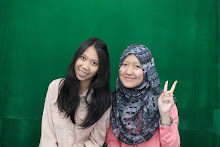HotScience │Petrosains
The belangkas or horseshoe crab is often called a "living fossil." It has been estimated to have inhabited the Earth for over 300 million years! However not many people know about this or even seen it up close. Mangroves on the other hand are not pretty to look at – it’s smelly and its location is quite inaccessible. However it has a unique ecosystem which is beneficial to us and our environment.
The objective of this particular engagement session is to provide an avenue for scientists from Universiti Malaysia Terengganu (UMT) to share their research in these two areas with the public.
There were two teams involved – The Mangroves Research and Conservation Unit (MARU),
and the Horseshoe Crab Research Group. Over the two days, the scientists and their assistants coaxed, encouraged and readily interacted and shared knowledge with the public.
and the Horseshoe Crab Research Group. Over the two days, the scientists and their assistants coaxed, encouraged and readily interacted and shared knowledge with the public.
Yes, our scientists are friendly and approachable indeed!
What are belangkas?
The belangkas or horse shoe crab is an invertebrate descended from the trilobite, and is closely related to spiders, ticks and scorpions. There are four species worldwide and three can be found in Malaysia. Its blood is colourless and turns light blue when exposed to air (oxygen). It reaches maturity at 9-12 years of age and the female is normally larger than the male.
The belangkas or horse shoe crab is an invertebrate descended from the trilobite, and is closely related to spiders, ticks and scorpions. There are four species worldwide and three can be found in Malaysia. Its blood is colourless and turns light blue when exposed to air (oxygen). It reaches maturity at 9-12 years of age and the female is normally larger than the male.
The Horseshoe Crab Research Group recently came up with a kit that uses belangkas blood to detect bacterial contamination. This kit could be manufactured locally and could be considered as economically feasible for the breeder and manufacturer.
What are mangroves?
Mangroves or bakau are found along sheltered coasts where there is saline soil & brackish water. Based on research, mangroves have been in existence 70 million years ago. There are currently 105 recorded species of mangrove vegetation in Malaysia (Sulong I. & M Lokman H, 2012).
Mangroves may be smelly and unsightly but it has many important roles and benefits.
• It contributes to complex food webs.
• It is a breeding area and provides protection from predators.
• It is rich in nutrients due to the large amount of unconsumed fallen foliage.
• It acts as wind and wave breakers.
• The root system traps sediments.
• It has socio-economic importance.
• It contributes to complex food webs.
• It is a breeding area and provides protection from predators.
• It is rich in nutrients due to the large amount of unconsumed fallen foliage.
• It acts as wind and wave breakers.
• The root system traps sediments.
• It has socio-economic importance.
This article is written in conjunction with Petrosains Science Engagement Session on 9-10 March 2013 with scientists from Universiti Malaysia Terengganu -
1. The Mangroves Research and Conservation Unit (MARU) headed by Pn. Siti Mariam Muhammad Nor
2. Horseshoe Crab Research Group headed by Dr. Faridah Binti Mohamad.
1. The Mangroves Research and Conservation Unit (MARU) headed by Pn. Siti Mariam Muhammad Nor
2. Horseshoe Crab Research Group headed by Dr. Faridah Binti Mohamad.




















0 komentar:
Posting Komentar